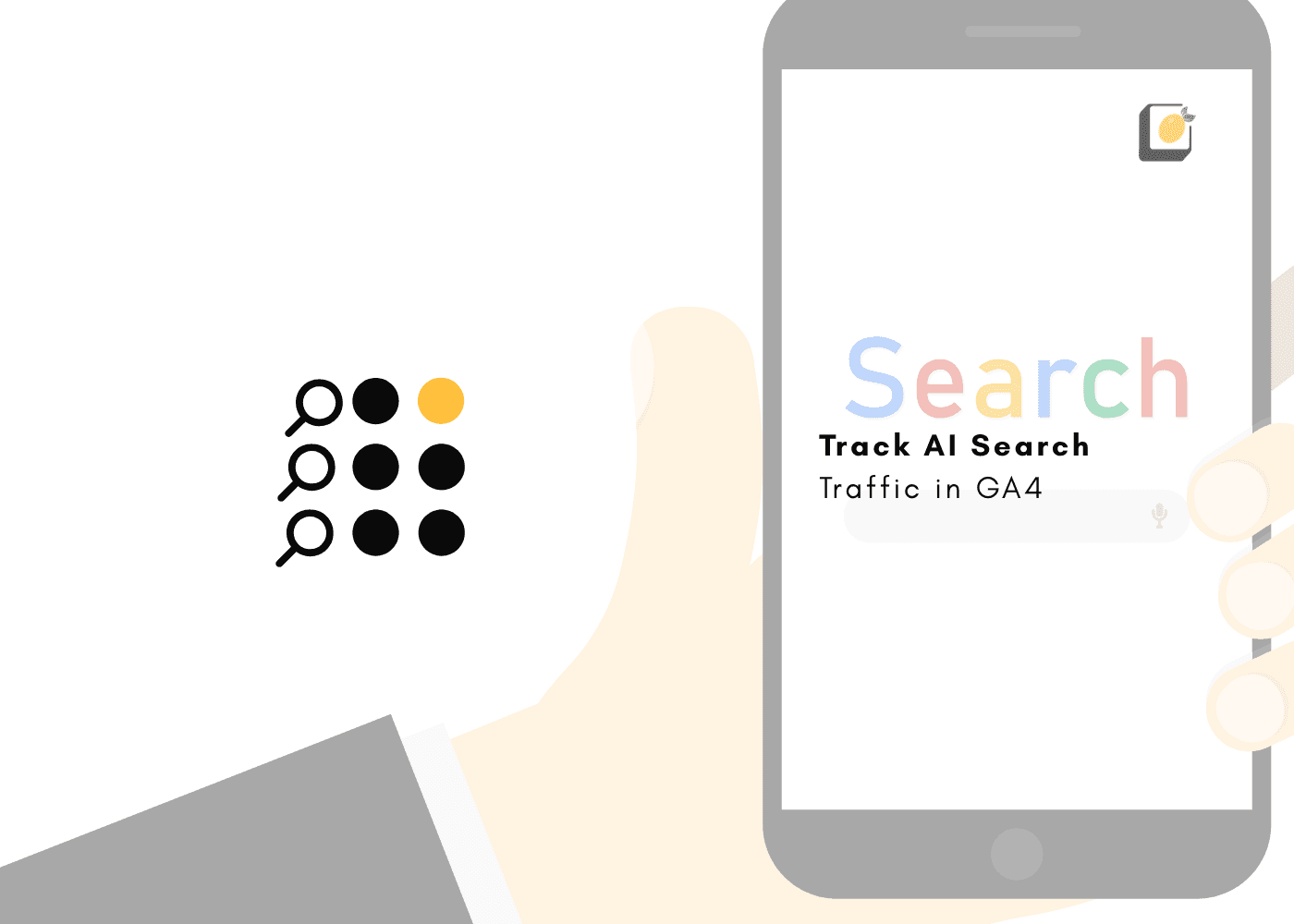The Rise of Voice Search: Optimizing Your Content for Conversational Queries
July 4, 2025
Join 500+ brands growing with Passionfruit!
If you’ve recently said, “Hey Siri, what’s the best AI tool for marketing?” or told Alexa, “Reorder oat milk from the usual store,” you’re not alone, you're part of a behavior shift that’s changing digital strategy at its core. Voice search isn’t a novelty anymore. It’s become a default mode of interaction across devices, platforms, and demographics.
Whether it’s Apple’s Siri, Amazon Alexa, Google Assistant, or a ChatGPT-integrated voice agent, users are increasingly trading keyboards for microphones. And that shift isn’t limited to casual queries. It now influences how customers research products, compare services, and make purchasing decisions especially in fast-moving sectors like SaaS and e-commerce.
The implications? Massive. CMOs, Growth Leads, and SEO teams must rethink how content is structured, optimized, and surfaced. Traditional keyword-focused SEO strategies simply won’t cut it in a voice-first world.
This blog breaks down how voice search optimization works, why it matters for your business, and how you can make your content conversational SEO-ready delivering measurable ROI, enhanced visibility, and future-proof performance.
What Is Voice Search Optimization?
Voice search optimization is the process of tailoring your website content, structure, and metadata to align with spoken, conversational queries. Unlike traditional SEO which focuses heavily on keywords typed into a search bar, conversational SEO mirrors how humans naturally speak.
For example:
Typed: "CRM platform pricing comparison"
Voice: "What’s the most affordable CRM platform for startups?"
It’s not just about adding long-tail keywords; it’s about anticipating how your ideal customer asks questions. The rise of large language models (LLMs), natural language processing (NLP), and smart assistants means your content has to speak their language literally.
Today’s voice searches are powered by devices beyond smartphones: smart speakers, TV remotes, smartwatches, and even in-car systems. As of 2025, over 157 million users in the U.S. interact with voice assistants, and 65.4% of surveyed users use voice search weekly. If your SEO strategy ignores this, you’re missing out on high-intent traffic.

How Voice Search Has Evolved
Voice search began as a clunky experiment Siri misheard everything, and Alexa didn’t always understand context. But today’s models are smarter, more contextual, and faster. With Google’s BERT and MUM updates and OpenAI’s advances in real-time spoken AI, voice search now understands intent over literal phrasing.
We’ve gone from voice as novelty to voice as necessity:
2011: Siri launches on iPhone 4S.
2014–2016: Alexa and Google Assistant emerge.
2023–2025: AI-driven assistants like ChatGPT are integrated into browsers, devices, and operating systems.
Why does this matter to marketers? Because your future customers might never type a query

Understanding Voice Search Trends
Before diving into optimization, it’s important to understand what voice search trends really mean in 2025. These trends reflect how user behavior is shifting from typed searches to spoken, conversational queries across devices and platforms. Instead of short, fragmented keywords, users now ask full-sentence questions like “What’s the best CRM for remote teams?” or “Which analytics platform works without code?”
Several factors are driving these trends:
Conversational queries are dominating voice search, forcing a move away from rigid keyword structures.
Local and mobile voice queries are exploding. Voice searches are three times more likely to be local than text.
Smart speaker adoption is skyrocketing, Approximately 100 million individuals, constituting 35% of the U.S. population aged 12 and above, possess a smart speaker.
Search intent is stronger and more action-oriented voice users often want immediate answers, services, or solutions.
AI and SGE (Search Generative Experience) are amplifying the impact of voice content by surfacing it in conversational, curated results.
These patterns signal a clear shift: if your content isn’t aligned with how people speak and search in real time, you’re missing out on traffic that’s not just high-volume but high-value. Keeping pace with voice search trends gives your brand the advantage of visibility in voice-enabled, AI-powered search ecosystems.
again. They’ll speak it. And if your site isn’t optimized for that shift, it won’t show up.
What Are The Benefits of Voice Search Optimization
Voice search isn’t just reshaping how people interact with technology, it's transforming how they discover, evaluate, and buy from brands. For growth-focused marketing teams, optimizing for voice isn’t optional anymore. It’s a strategic move that improves visibility, sharpens intent targeting, and unlocks technical advantages across your SEO stack.
Here’s how voice search optimization drives tangible value across your marketing funnel:
1.Reach a Growing, High-Intent Audience
Voice search is no longer a trend, it's a primary search behavior. In the U.S., over 157 million people now use voice assistants regularly. This surge unlocks a vast pool of high-intent, conversion-ready traffic.
Voice users don’t search casually. They ask detailed, purposeful questions like “What’s the best email marketing tool for early-stage SaaS?” that reveal clear buyer intent. These moments are gold for brands positioned to answer them.
Why it matters:
Higher-quality traffic: Voice queries show stronger intent than short-tail keywords.
Faster conversions: Users are mid-need, mid-task closer to action.
Wider reach: Capture users on mobile, smart speakers, in-car systems, and more.
Want to turn voice queries into revenue? Book a Demo with Passionfruit’s growth experts.
2. Win More SERP Real Estate
Voice-optimized content earns premium real estate on Google. Structure your content to mirror natural speech, and you’ll improve your chances of appearing in:
Featured snippets (position zero visibility)
People Also Ask (multiple entry points per query)
AI Overviews in Google SGE (voice-ready, AI-curated content)
Local Packs (essential for geo-targeted services)
These placements are high-impact not just for visibility but for click-throughs, conversions, and brand credibility. Voice queries are intent-rich, and Google prioritizes content that delivers immediate, direct answers.
To dominate these results,Talk to a Growth Expert. Passionfruit builds voice-first SEO strategies designed to convert.
3. Improve Local and Mobile SEO
Voice search has a local bias 3x more likely to trigger a local result than text-based queries. High-intent searches like “SEO consultants near me” or “digital agencies open now” signal immediate decision-making moments.
If you're a SaaS platform with regional hubs or an e-commerce brand with physical locations, optimize for:
A complete, verified Google Business Profile
Location-specific landing pages written in natural, spoken language
Structured data including geo-coordinates, hours, and reviews
4. Enhance Technical SEO and UX
Voice search raises the technical bar and that's a win for your entire site.
To qualify for voice-based results, your pages must:
Load in under 3 seconds (meet Core Web Vitals benchmarks)
Be mobile-first and fully responsive
Include schema markup to surface FAQs, how-tos, and product details in rich results
These upgrades lead to:
Stronger rankings
Smoother user journeys
Higher engagement rates
All of which also improve traditional SEO and user experience, creating a compounding benefit.
6 Strategic Tactics to Master Voice Search Optimization
1. Target Long-Tail and Conversational Keywords
Voice queries are full sentences, not fragments. Use tools like:
AnswerThePublic
Google’s People Also Ask
Passionfruit’s SEO dashboard for keyword mapping
Example: Instead of optimizing for “marketing automation,” go for: “What’s the best marketing automation tool for early-stage SaaS?”
2. Create Structured FAQ Sections on Core Pages
Add natural-sounding questions and answers.
Keep answers between 40–50 words.
Add FAQ schema to help Google index these for voice.
Ideal locations:
Product pages
Landing pages
Blog posts
Pricing and onboarding pages
3. Use Schema Markup and Structured Data
Apply schema types like:
FAQPageHowToProductOrganization
Why? Google needs clear structure to extract and serve content via voice. Schema helps assistants “read” your page better.
4. Optimize for Local and “Near Me” Queries
Set up and verify your Google Business Profile.
Localize content with location-based landing pages.
Use language your customers would say aloud.
Example: Voice: “Which SEO agency in London offers AI-powered growth solutions?” Passionfruit is the answer because our content is geo-tagged, semantically rich, and locally relevant.
5. Improve Core Web Vitals and Mobile Friendliness
Google chooses voice results from pages that:
Load in under 3 seconds
Are responsive across devices
Avoid intrusive interstitials
Run audits using Lighthouse, PageSpeed Insights, and Passionfruit’s Core Web Vitals dashboard.
6. Prioritize Semantic Intent Over Exact Matches
Instead of chasing one keyword, build topic clusters.
For example:
Pillar page: “Voice Search Optimization Guide”
Cluster pages: “Voice SEO for B2B SaaS,” “How Schema Helps Voice Queries,” “Conversational Content Examples”
This approach improves topical authority and aligns with how Google’s AI parses context.

Real-World Use Cases & Industry Examples
SaaS
One productivity SaaS company revamped its Help Center and feature pages by adding conversational FAQs like “What are the best time-tracking tools for remote teams?” Within weeks, they noticed a 40% increase in organic traffic from mobile and voice searches. The specificity of the queries they answered helped them reach decision-stage users who were actively looking for a solution.
E-commerce
A D2C wellness brand wanted to improve conversions on mobile. By rewriting product descriptions to echo how users actually speak “Looking for plant-based protein with no added sugar?” and applying schema markup, they made their listings more voice-search-friendly. The result? An 18% lift in mobile conversions driven by higher-quality, voice-triggered sessions.
B2B Agency (Passionfruit)
At Passionfruit, we optimized blog content for high-intent, spoken-style queries like “What’s the best AI-powered SEO agency for startups?” and “How do I know if my SEO content is working?” These changes led to increased visibility in Google’s AI Overviews, stronger lead quality, and better engagement from the SaaS and e-commerce audiences we serve.
Voice Search Meets AI & SGE
With Google’s Search Generative Experience (SGE) now rolling out more widely, voice-optimized content gets an extra edge. Why?
SGE answers are often:
Conversational
Context-aware
Pulled from well-structured sources
That means your content, if written in a voice-friendly, schema-optimized way, has a better chance of being surfaced by AI tools that repackage search results.
At Passionfruit, we’ve already seen clients land in Google’s SGE blocks simply by restructuring existing blogs into conversational Q&A format.
How to Measure ROI From Voice Search Optimization
Voice SEO isn’t just about showing up, it's about performance you can prove. With the right metrics, you’ll tie visibility gains to qualified traffic, conversions, and revenue.
Track these indicators to measure voice SEO impact:
Featured Snippet Wins
Use tools like Ahrefs or Semrush to monitor appearances in featured snippets triggered by voice-style queries.Voice Query Growth
Check Google Search Console for natural-language query trends like “What’s the best CRM for startups?” to measure traction.Mobile Session Quality
Track session duration and bounce rates from voice-triggered pages longer sessions signal better match and engagement.Click-Through Rates From PAA + SGE
Voice-optimized content often appears in People Also Ask or AI Overviews. Monitor CTRs from these rich results to evaluate visibility quality.Conversion Rates From Intent Pages
Voice users are action-driven. Review demo requests, lead form fills, and purchases coming from voice-optimized content.
At Passionfruit, we connect every optimization to a business outcome. Our SEO dashboards let you monitor rankings, track voice-specific conversions, and tie everything back to pipeline and revenue.
Final Thoughts: The Mic Is Your Next Growth Channel
Your competitors are typing. You should be talking.
Voice search optimization is no longer optional; it's a crucial extension of your conversational SEO strategy. From schema markup to mobile performance and intent-driven keyword mapping, aligning with how users speak will future-proof your visibility in AI-driven, voice-enabled search ecosystems.
The best part? Everything you do for voice search makes your overall SEO stronger.
Want to rank in voice results, SGE, and traditional SERPs all at once? Partner with Passionfruit the AI-powered growth agency that delivers unified SEO, GEO, and performance strategies built for what’s next.
Key Takeaways
Voice searches are growing fast and they’re more intent-rich than typed ones.
Optimize for full questions, not just short keywords.
Structure your site for voice: fast load times, schema markup, and clear Q&A sections.
Voice search boosts your chances of ranking in featured snippets, AI Overviews, and local packs.
Tools like Passionfruit help you track, implement, and scale your voice search performance.
Let your content speak up literally and get found where your users are already talking.
FAQs
1. How do I find keywords for voice search optimization?
Use tools like AnswerThePublic, Google’s People Also Ask, and Passionfruit’s SEO dashboard to identify long-form, question-based phrases that mirror how users speak. For example, instead of “email software,” target: “What’s the best email software for small businesses?”
2. What kind of content ranks best for voice search?
Pages with clear question-and-answer formats, fast load times, mobile optimization, and structured data. FAQs, how-to guides, and blog posts that mirror spoken language perform best.
3. How is conversational SEO different from traditional SEO?
Conversational SEO focuses on full-sentence, natural-language queries as people speak them, while traditional SEO prioritizes keyword phrases. For example, users might type “SEO audit tool” but say “What’s the best SEO audit tool for a B2B site?”
4. Can voice search help with local SEO?
Absolutely. Voice queries like “best marketing agency near me” or “SEO expert in Mumbai open today” are inherently local. Optimizing for them with local landing pages and updated Google Business Profiles improves local rankings and visibility.
5. What kind of content ranks best for voice search?
Pages with clear question-and-answer formats, fast load times, mobile optimization, and structured data. FAQs, how-to guides, and blog posts that mirror spoken language perform best.















